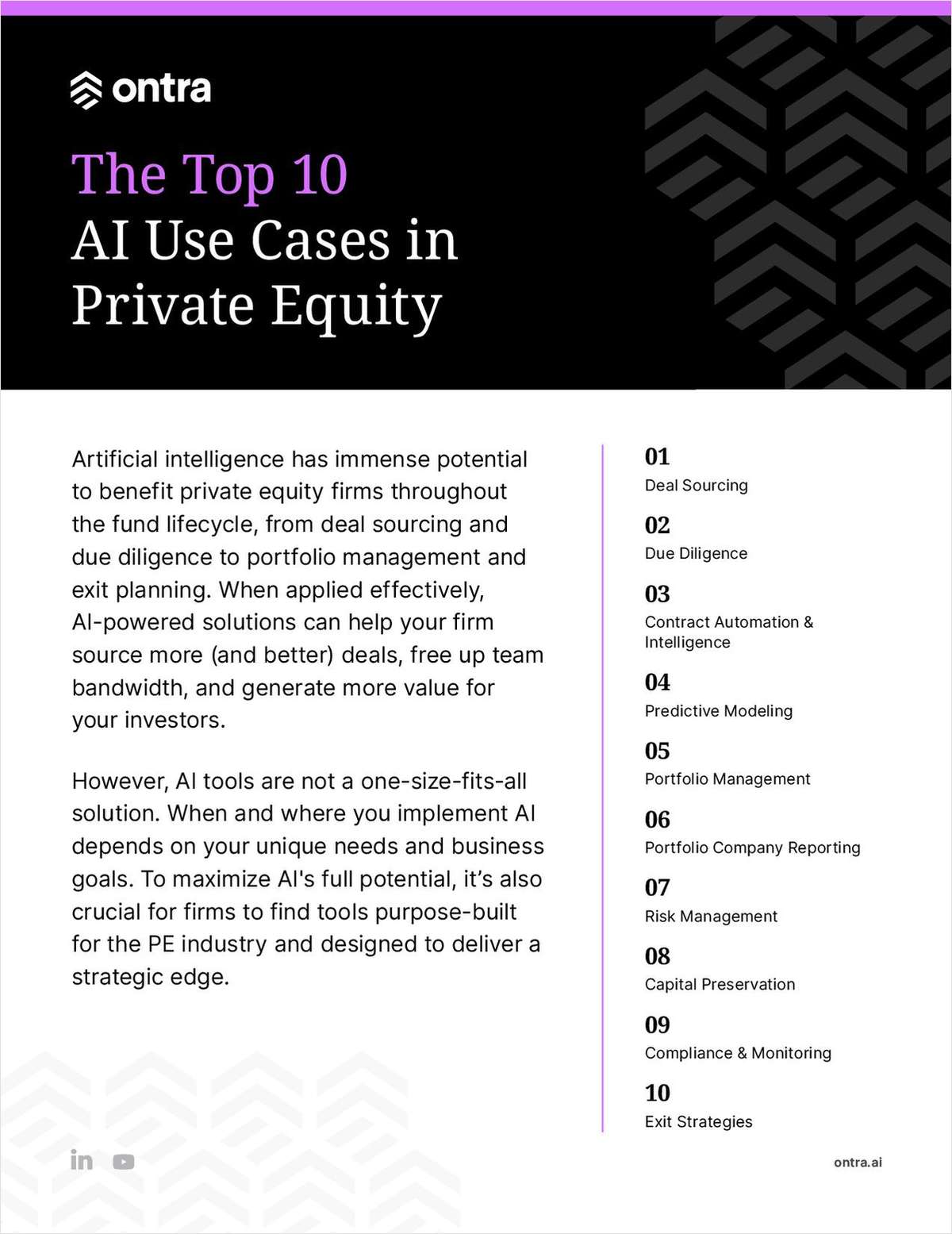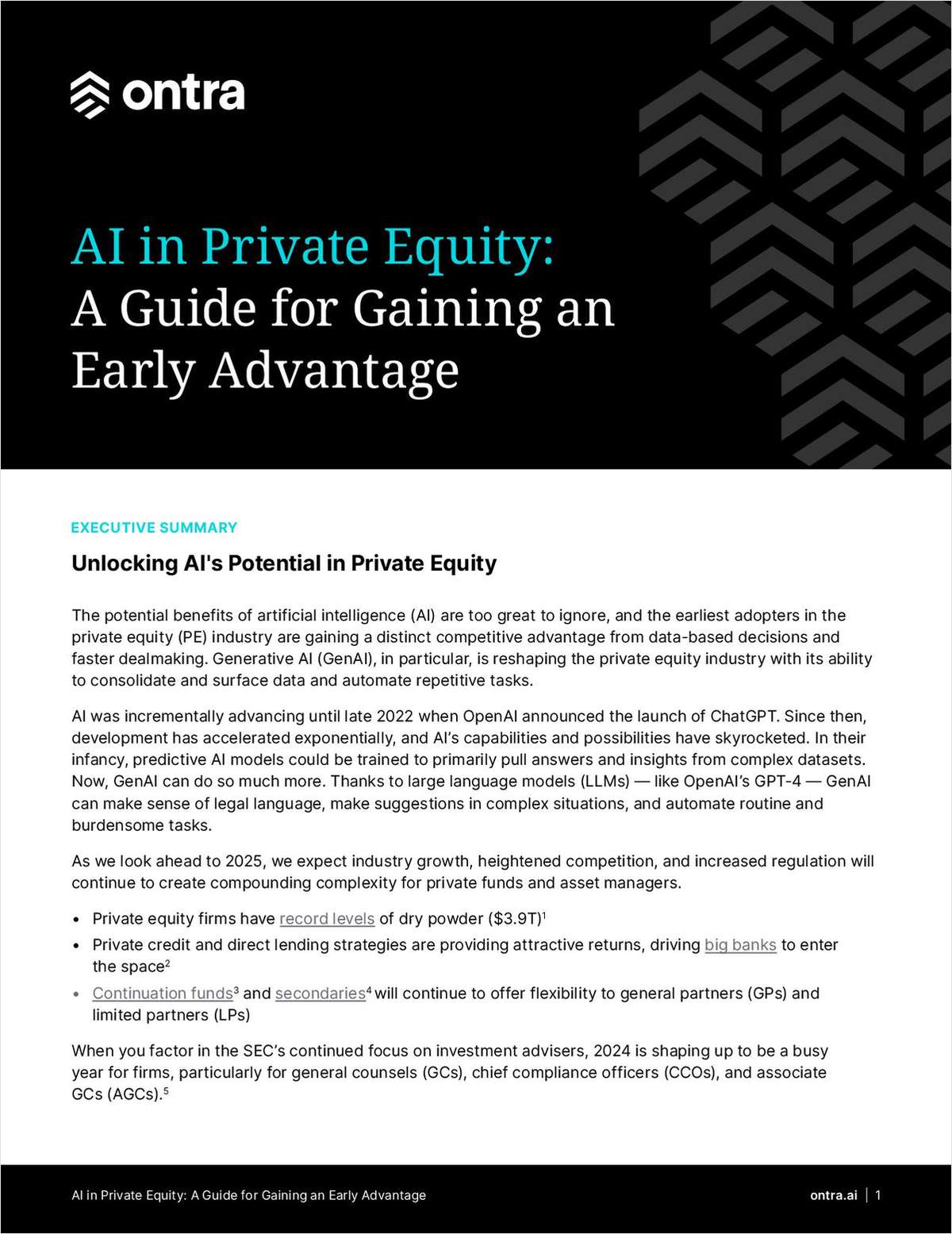Innovation Is Key to Remaining Relevant in the Canadian Legal Market
The combination of evolving client pressures, new entrants in the legal service provider space, and the influence of a new generation of lawyers has created the ideal environment for change.
January 08, 2020 at 05:00 AM
6 minute read
The original version of this story was published on The American Lawyer

The constant introduction of new technologies and automation is a known force in all industries, and the Canadian legal industry is no different.
The combination of evolving client pressures, new entrants in the legal service provider space, and the influence of a new generation of lawyers has created the ideal environment for change. That change can be daunting and requires an understanding of legal technology and legal project management, as well as a supportive internal firm culture. It is also an incredible opportunity to find new and better ways to work with clients, potentially in ways we never before thought possible.
The impact of legal technology—from the application of machine learning in document and contract review to the use of transaction management software—has been significant. Proficiency with these types of tools is something clients have come to expect. But the real benefits for lawyers and clients come when those new technologies are deployed intelligently, with an eye to the growing pressure that clients are facing to deliver more with less.
This requires a holistic approach to innovation, including new technology, greater transparency in communications with clients, but also with our own resources, and flexibility in service delivery models.
The persistent skepticism in the legal industry surrounding the adoption of new technology, particularly artificial intelligence tools, has slowly eroded as two critical factors have emerged: changing client demands and expectations, and proof that many of these tools deliver tangible benefits to both firms and their clients.
The first area in which we witnessed an impact from these forces was the adoption of e-discovery software. New competitors in the legal market and increased cost pressures on in-house legal teams threatened the ability of law firms to competitively offer this service. However, the emergence of e-discovery tools like Relativity, which create significant efficiencies through active learning, combined with more flexible business models, have allowed law firms to continue providing this service at a very high quality.
In the past few years, we've seen the same approach applied to many different types of work: due diligence, contract review, drafting and research, to name a few. Tools like Kira for due diligence and other contract review have been widely adopted in the market to assist with tasks that are repetitive, expensive and prone to human error.
The most innovative firms are moving away from simply solving discrete problems or applying technology to specific tasks, and instead thinking about ways in which different tools can work together to create cohesive workflows. For example, connecting artificial intelligence tools to a client portal in HighQ can provide a centralized place for lawyers to work and provide their clients with greater transparency on their matters.
These developments are exciting, but the firms that have seen the greatest success have ensured that the technology is implemented and supported within a rigorous project management function. This way, technology is only purchased to solve a real problem or create a quantifiable opportunity, the lawyers using the technology are the drivers of change, and clients are always at the forefront.
Clients have started asking their firms about the technology they use and how it fits into their long-term strategy, but we think this process should be turned on its head. When law firms reach out to their clients and ask the right questions, either directly or through group client innovation seminars or design thinking workshops, new opportunities surface for firms to help their clients in ways they never have before.
While everyone is talking about legal technology and project management, the piece of the puzzle that law firms struggle with the most—but is rarely the focus of these discussions—is culture.
Purchasing a new piece of technology or creating a new legal operations position can be valuable, but without the proper environment to foster its adoption and success it is very unlikely to have the desired positive impact. However, there are reassuring signs that the legal industry is acknowledging that innovation is not a buzzword or a fad, but a serious challenge that requires everyone's attention in the organization.
Our view, and mine as chair of Blakes, is that cultural change is both top-down and bottom-up. A critical starting point is having senior partners or executive committee members of the firm deeply involved in the formation of the innovation strategy and signaling to the firm that this is an important priority. However, the power of a new generation of lawyers with incredible technical abilities and new perspectives should not be underestimated. Young lawyers should not only be encouraged and trained to use the technology the firm adopts but should be supported when they think creatively and question the way work is currently being done.
And it is most effective to lead by example. For us, it meant being bold enough to implement an associate allocation time tool. Through this technology, we are reinventing the way we allocate work to build a more inclusive workplace and expand opportunities for associates, allowing us to better leverage our talent and circumvent any unconscious bias in work allocation.
The momentum with innovation that we feel both at our firm and elsewhere is building, but significant challenges lay ahead. With the adoption of new tools and new business models come new types of data that need to be managed if a firm is going to be able to capitalize. Newer entrants in the legal market are intensifying their focus on technology and process improvement. Our clients are under constant pressure to reduce legal spend while increasingly proving they are strategic partners to the business.
Law firms are well placed to navigate and thrive in this changing landscape, as long as we spend the time on the critical building blocks: fostering an inclusive and innovative culture, reimagining our processes, and doing the hard work of understanding and implementing emerging technology.
Brock Gibson is the chair of Blake, Cassels & Graydon.
This content has been archived. It is available through our partners, LexisNexis® and Bloomberg Law.
To view this content, please continue to their sites.
Not a Lexis Subscriber?
Subscribe Now
Not a Bloomberg Law Subscriber?
Subscribe Now
NOT FOR REPRINT
© 2024 ALM Global, LLC, All Rights Reserved. Request academic re-use from www.copyright.com. All other uses, submit a request to [email protected]. For more information visit Asset & Logo Licensing.
You Might Like
View All

HSF Locks In Its American Dream. But What Will a U.S. Merger Mean For its Asia Practice?
Trending Stories
- 1Judge Denies Sean Combs Third Bail Bid, Citing Community Safety
- 2Republican FTC Commissioner: 'The Time for Rulemaking by the Biden-Harris FTC Is Over'
- 3NY Appellate Panel Cites Student's Disciplinary History While Sending Negligence Claim Against School District to Trial
- 4A Meta DIG and Its Nvidia Implications
- 5Deception or Coercion? California Supreme Court Grants Review in Jailhouse Confession Case
Who Got The Work
Michael G. Bongiorno, Andrew Scott Dulberg and Elizabeth E. Driscoll from Wilmer Cutler Pickering Hale and Dorr have stepped in to represent Symbotic Inc., an A.I.-enabled technology platform that focuses on increasing supply chain efficiency, and other defendants in a pending shareholder derivative lawsuit. The case, filed Oct. 2 in Massachusetts District Court by the Brown Law Firm on behalf of Stephen Austen, accuses certain officers and directors of misleading investors in regard to Symbotic's potential for margin growth by failing to disclose that the company was not equipped to timely deploy its systems or manage expenses through project delays. The case, assigned to U.S. District Judge Nathaniel M. Gorton, is 1:24-cv-12522, Austen v. Cohen et al.
Who Got The Work
Edmund Polubinski and Marie Killmond of Davis Polk & Wardwell have entered appearances for data platform software development company MongoDB and other defendants in a pending shareholder derivative lawsuit. The action, filed Oct. 7 in New York Southern District Court by the Brown Law Firm, accuses the company's directors and/or officers of falsely expressing confidence in the company’s restructuring of its sales incentive plan and downplaying the severity of decreases in its upfront commitments. The case is 1:24-cv-07594, Roy v. Ittycheria et al.
Who Got The Work
Amy O. Bruchs and Kurt F. Ellison of Michael Best & Friedrich have entered appearances for Epic Systems Corp. in a pending employment discrimination lawsuit. The suit was filed Sept. 7 in Wisconsin Western District Court by Levine Eisberner LLC and Siri & Glimstad on behalf of a project manager who claims that he was wrongfully terminated after applying for a religious exemption to the defendant's COVID-19 vaccine mandate. The case, assigned to U.S. Magistrate Judge Anita Marie Boor, is 3:24-cv-00630, Secker, Nathan v. Epic Systems Corporation.
Who Got The Work
David X. Sullivan, Thomas J. Finn and Gregory A. Hall from McCarter & English have entered appearances for Sunrun Installation Services in a pending civil rights lawsuit. The complaint was filed Sept. 4 in Connecticut District Court by attorney Robert M. Berke on behalf of former employee George Edward Steins, who was arrested and charged with employing an unregistered home improvement salesperson. The complaint alleges that had Sunrun informed the Connecticut Department of Consumer Protection that the plaintiff's employment had ended in 2017 and that he no longer held Sunrun's home improvement contractor license, he would not have been hit with charges, which were dismissed in May 2024. The case, assigned to U.S. District Judge Jeffrey A. Meyer, is 3:24-cv-01423, Steins v. Sunrun, Inc. et al.
Who Got The Work
Greenberg Traurig shareholder Joshua L. Raskin has entered an appearance for boohoo.com UK Ltd. in a pending patent infringement lawsuit. The suit, filed Sept. 3 in Texas Eastern District Court by Rozier Hardt McDonough on behalf of Alto Dynamics, asserts five patents related to an online shopping platform. The case, assigned to U.S. District Judge Rodney Gilstrap, is 2:24-cv-00719, Alto Dynamics, LLC v. boohoo.com UK Limited.
Featured Firms
Law Offices of Gary Martin Hays & Associates, P.C.
(470) 294-1674
Law Offices of Mark E. Salomone
(857) 444-6468
Smith & Hassler
(713) 739-1250











